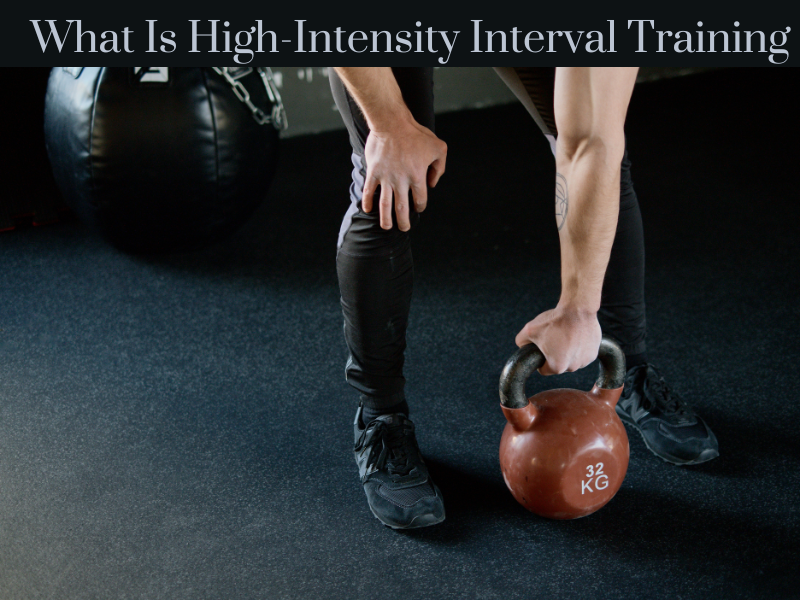In the ever-evolving world of fitness, High-Intensity Interval Training (HIIT) has emerged as a popular and effective workout regimen. But what exactly is HIIT, and why is it garnering so much attention? In this article, we’ll delve into the science behind HIIT, its benefits, and how you can incorporate it into your fitness routine to achieve your goals efficiently.
What is HIIT?
HIIT is a form of cardiovascular exercise characterized by short bursts of intense activity followed by brief periods of rest or lower-intensity exercise. These intervals can vary in duration, but the key is to push yourself to your maximum effort during the high-intensity phases. HIIT workouts can be more than just cardio, you can create HIIT workouts for weight training as well.
How Does HIIT Work?
During high-intensity intervals, your body works at or near its maximum capacity, causing your heart rate to rise significantly. This triggers a phenomenon known as excess post-exercise oxygen consumption (EPOC), or the “afterburn effect.” Essentially, your body continues to burn calories at an elevated rate even after you’ve finished your workout, aiding in fat loss and improving overall metabolic health.
Benefits of HIIT
A high-intensity interval training workout has a number of benefits including:
- Time-Efficient: HIIT cardio workouts are typically shorter in duration compared to traditional steady-state cardio exercises, making them ideal for individuals with busy schedules.
- Increased Caloric Burn: The intense nature of HIIT results in a higher calorie expenditure during and after the workout, making it an effective tool for weight loss.
- Improved Cardiovascular Health: HIIT has been shown to enhance heart health by improving cardiovascular function and increasing aerobic capacity.
- Preservation of Lean Muscle Mass: Unlike steady-state cardio, which may lead to muscle loss over time, HIIT helps preserve lean muscle mass while promoting fat loss.
- Versatility: HIIT workouts can be adapted to suit various fitness levels and preferences, incorporating a wide range of exercises and equipment.
Examples of HIIT

High-Intensity Interval Training (HIIT) can encompass a wide range of exercises beyond traditional cardio, offering versatility and effectiveness in achieving fitness goals. Here are some examples of HIIT exercises and how you can incorporate them into your workout routine:
- Sprinting Intervals:
- Sprint at maximum effort for 20-30 seconds.
- Follow with a 1-minute recovery period of light jogging or walking.
- Repeat for a total of 5-10 rounds.
- Bodyweight Circuit:
- Perform a series of bodyweight exercises such as squats, push-ups, burpees, mountain climbers, and jumping lunges.
- Perform each exercise at high intensity for 30 seconds, followed by a 15-second rest.
- Complete the circuit 3-4 times with minimal rest between exercises.
- Tabata Training:
- Choose an exercise (e.g., squat jumps, kettlebell swings, or sprints).
- Perform the exercise at maximum intensity for 20 seconds, followed by 10 seconds of rest.
- Repeat for 8 rounds, totaling 4 minutes.
- Strength Training Supersets:
- Pair two strength exercises targeting different muscle groups (e.g., squats and push-ups).
- Perform each exercise for 40 seconds at high intensity, followed by a 20-second rest.
- Complete 3-4 rounds of the superset, alternating between exercises.
- Cycling Intervals:
- Alternate between periods of high-intensity cycling (sprinting or climbing) and recovery.
- Cycle at maximum effort for 1 minute, followed by 2 minutes of moderate cycling.
- Repeat for 15-20 minutes, adjusting intensity and duration based on fitness level.
- Plyometric Exercises:
- Incorporate explosive movements like box jumps, squat jumps, or jump lunges.
- Perform each exercise for 30-45 seconds with maximum effort, followed by 15-30 seconds of rest.
- Complete 3-4 rounds of the circuit.
- Swimming Intervals:
- Swim laps at maximum effort for 1-2 minutes, alternating strokes (freestyle, butterfly, breaststroke).
- Follow each high-intensity lap with a 1-minute recovery swim at a slower pace.
- Repeat for 20-30 minutes.
- Mixed Modality Circuits:
- Combine different types of exercises into a single circuit (e.g., kettlebell swings, jump rope, and box jumps).
- Perform each exercise for 45 seconds, followed by 15 seconds of rest.
- Complete 3-4 rounds of the circuit.
Tips for Incorporating HIIT into Your Routine
- Start Slow: If you’re new to HIIT, begin with shorter intervals and gradually increase the intensity and duration as your fitness level improves.
- Mix It Up: Experiment with different exercises, such as sprinting, cycling, jumping jacks, or burpees, to keep your workouts challenging and engaging.
- Listen to Your Body: Pay attention to how your body responds to HIIT and adjust the intensity or duration accordingly to prevent overexertion and injury.
- Combine with Strength Training: Pairing HIIT with strength training exercises can maximize results, promoting both cardiovascular fitness and muscle strength.
- Rest and Recovery: Allow adequate time for rest and recovery between HIIT sessions to prevent burnout and optimize performance.
High-Intensity Interval Training offers a plethora of benefits for individuals looking to maximize their workout efficiency and achieve their fitness goals. By incorporating HIIT into your routine and tailoring it to your specific needs and abilities, you can experience significant improvements in cardiovascular health, fat loss, and overall fitness. So why wait? Give HIIT a try and unleash your full potential in the gym!
Coach Onelio
